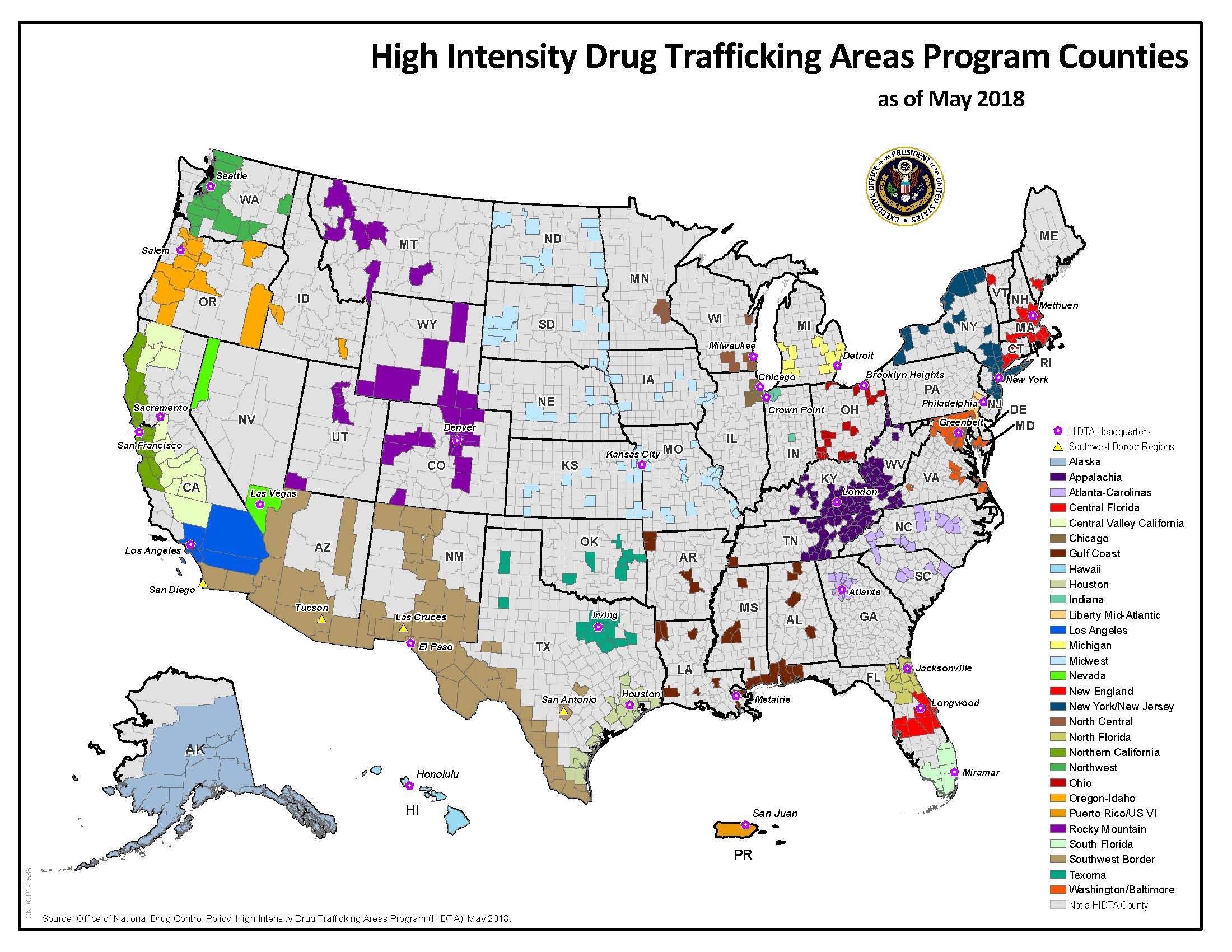Alaska Delegation Welcomes Critical HIDTA Designation to Combat Drug Trafficking and Reduce Supply of Illegal Drugs
WASHINGTON, DC – The Alaska Congressional Delegation today welcomed a critical announcement by the Office of National Drug Control Policy (ONDCP) to help facilitate greater cooperation, criminal case coordination and information sharing among local, tribal, state and federal agencies currently engaged in counter-drug trafficking operations in Alaska. The decision to designate areas surrounding Anchorage, Fairbanks, and Juneau as High Intensity Drug Trafficking Areas (HIDTA) represents the first new regional HIDTA program since 2001 and makes Alaska the 50th state to be eligible for the federal grant program.

“I welcome the news that Alaska will receive a HIDTA designation,” said Senator Dan Sullivan. “In Alaska, much like the rest of the country, we have seen a massive spike in opioid and heroin addiction throughout the state, wreaking havoc in our communities and on our families. However, until now, Alaska was the only state in the country without a HIDTA designation. I look forward to meeting with Jim Carroll, the acting director of the Office of National Drug Control Policy, who I have invited to Alaska, to talk about more ways the federal government can help Alaska. I’d also like to thank Governor Bill Walker, Public Safety Commissioner Walt Monegan, and the numerous local state and federal law enforcement entities who pulled together to submit the application to this program. Addressing this crisis will take all of us – on the federal, state and local levels – to continue to work together to find solutions.”
“With opioids, methamphetamines, and other narcotics wreaking havoc in our communities, this announcement could not have come at a better time. The HIDTA program will open the door for Alaska to receive additional federal resources to bolster law enforcement and improve drug control efforts at a state and local level,” said Senator Lisa Murkowski. “Our state is no stranger to substance abuse or the detrimental effects that ripple into our communities. This is an encouraging step towards developing initiatives that will decrease the production and distribution of illegal drugs, to keep them off our streets and cut the issue off at the source.”
“Fighting the opioid crisis in Alaska requires a unified effort from the local, state and federal level,” said Congressman Don Young. “Today, the Office of National Drug Control Policy recognized that substance abuse and drug trafficking has been, and continues to be, one of Alaska's greatest challenges. It robs us of our youth, plagues countless adults, and inflicts anguish on our families. With the High Intensity Drug Trafficking Area (HIDTA) designation, our law enforcement officers will be better equipped with the resources they need to combat this epidemic. We have an opportunity to engage our communities and confront this challenge directly. I believe this is a time Alaskans can come together to improve the future of our state and our quality of life.”
“This decision enables Alaska to receive Federal resources to further the coordination and development of drug control efforts among Federal, State, and local law enforcement officers, and allow local agencies to benefit from ongoing HIDTA initiatives that are working to reduce drug trafficking across the United States,” wrote James Carroll, Deputy Director, National Drug Control Policy. “This historic designation brings the HIDTA program full circle, and they will now be located in all 50 states. The HIDTA program plays a vital role in the United States by keeping dangerous drugs off of our streets. We look forward to working with the local, tribal, state and Federal partners in Alaska to connect them with the resources they need to address the unique challenges they face.”
Background:
In January 2018, Senator Sullivan and Senator Murkowski each wrote the Office of National Drug Control Policy in support of the State of Alaska’s request for designation as a standalone High Intensity Drug Trafficking Area.
The HIDTA program was created by Congress in 1988 and serves as a catalyst for coordination among Federal, state, local, and tribal law enforcement agencies operating in areas determined to be critical drug trafficking regions of the United States. Law enforcement organizations working within HIDTAs assess drug-trafficking problems and design specific initiatives to decrease the production, transportation, and distribution of drugs. Some HIDTAs across the country also work closely with local partners to reduce the demand for drugs, including public health officials that work to connect drug users to treatment, especially after an overdose. With the designation of portions of Alaska, there are 29 HIDTAs located in 50 states, as well as in Puerto Rico, the U.S. Virgin Islands, and the District of Columbia.
Additionally, Alaska currently has three Drug Free Community (DFC) support funded community coalitions located in Sitka, the Ketchikan, and Mat-Su Valley.
###
Next Article Previous Article
